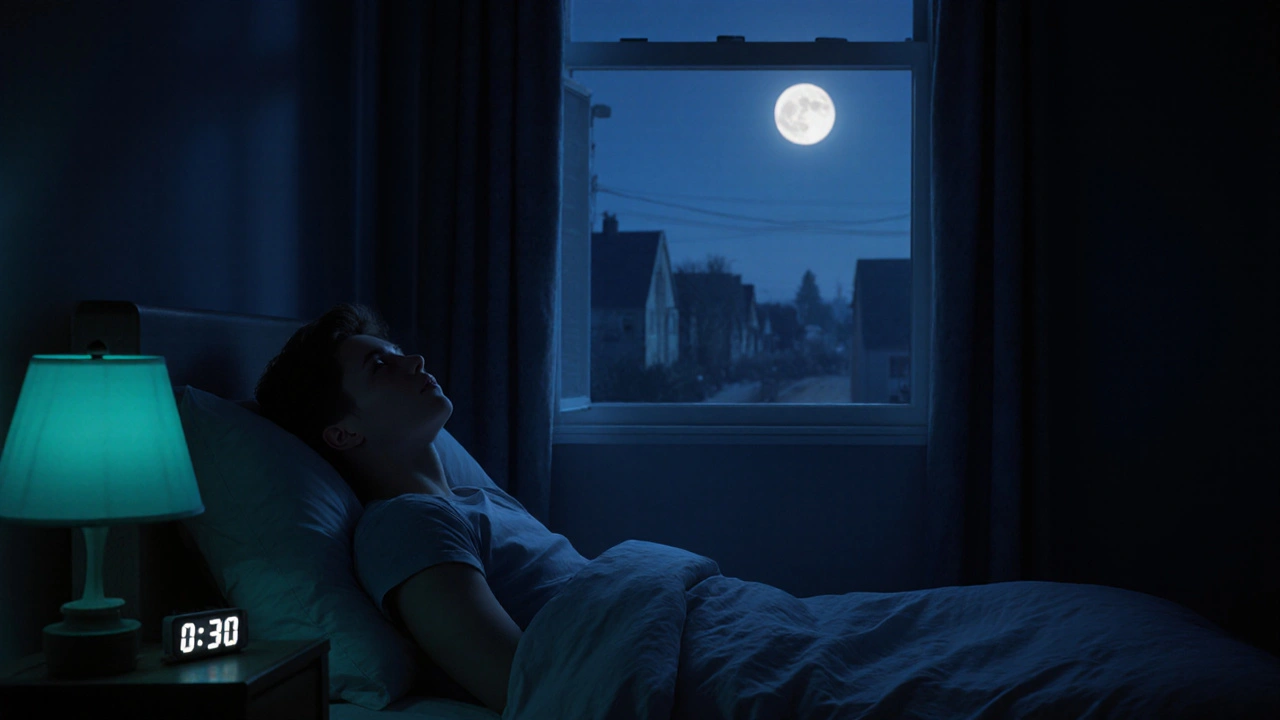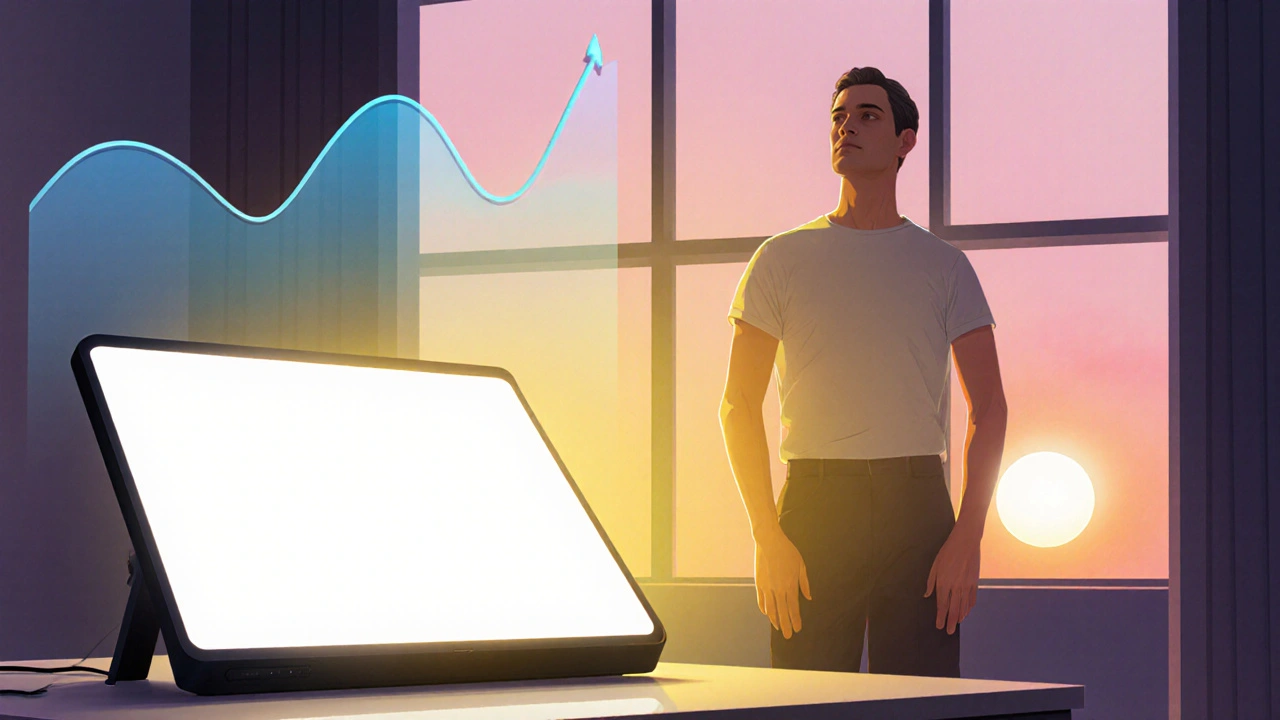
DSPS & Immune Health Calculator
Your Immune Health Risk Assessment
Key Factors Influencing Your Immune Response:
Ever feel like your body clock is stuck on a different schedule than everyone else’s? When that mismatch is chronic, it’s called Delayed Sleep Phase Syndrome (DSPS), a condition that not only ruins your sleep but can also throw your immune defenses off balance. Below we break down what DSPS really is, why it matters for immunity, and what you can do to get back on track.
What Is Delayed Sleep Phase Syndrome?
Delayed Sleep Phase Syndrome is a circadian rhythm sleep‑wake disorder where the internal clock is delayed relative to the 24‑hour day. This means you naturally feel sleepy later at night and struggle to wake up early, even after a full night’s rest. People with DSPS often report bedtime after 2a.m. and difficulty getting up before 10a.m., despite wanting a normal schedule. It’s not just a habit; it’s a biologically rooted mismatch between the body’s master clock and the external light‑dark cycle.
How DSPS Disrupts the Circadian Clock
The body’s timing system hinges on the Circadian Rhythm is a roughly 24‑hour cycle that regulates sleep, hormone release, temperature, and many other physiological processes. This rhythm is orchestrated by the suprachiasmatic nucleus (SCN) in the hypothalamus, which receives light input through the eyes. In DSPS, the SCN’s phase is shifted later, causing a cascade of timing errors:
- Melatonin-the “sleep hormone”-starts rising 2‑3hours later than usual.
- Cortisol, which helps you wake up, peaks later in the morning.
- Body temperature, heart rate, and appetite signals all follow the delayed pattern.
Because the SCN is out of sync, downstream systems-especially the immune system-receive irregular cues.
The Immune System’s Rhythm: Why Timing Matters
Immune System is a network of cells, tissues, and molecules that protect the body from infection and disease. It isn’t a static defender; many of its components follow a daily rhythm. For example, levels of pro‑inflammatory cytokines such as interleukin‑6 (IL‑6) and tumor necrosis factor‑α (TNF‑α) peak during the night, while anti‑inflammatory markers rise in the morning. This timing helps the body balance repair (which occurs during sleep) with readiness to fight pathogens during waking hours.
When the circadian clock is misaligned, immune cells like T‑cells and B‑cells receive mixed signals, leading to altered cytokine production, reduced vaccine effectiveness, and higher susceptibility to infections.
Links Between DSDS and Immune Function
Recent studies (e.g., a 2023 longitudinal cohort of 5,200 shift‑workers) show that chronic phase delay is associated with:
- Elevated night‑time IL‑6 levels - a marker for systemic inflammation.
- Reduced natural killer (NK) cell activity by up to 15%.
- Lower seroconversion rates after flu vaccination - about 20% less than in individuals with normal rhythms.
- Higher self‑reported rates of common colds and viral infections.
These findings suggest that the delayed release of melatonin and cortisol disrupts the coordination between the nervous and immune systems, a concept known as neuro‑immunomodulation.

Practical Ways to Align Your Clock and Boost Immunity
Fortunately, there are evidence‑based strategies that can shift the clock earlier and give the immune system a clearer signal.
- Bright Light Therapy: Exposure to 10,000‑lux light for 30minutes within an hour of your desired wake‑time can advance the SCN. Morning light is the most powerful cue.
- Melatonin Supplementation: Taking 0.5mg of melatonin 4-5hours before your target bedtime helps signal the body that night is approaching. Keep doses low to avoid daytime drowsiness.
- Chronotherapy: Systematically shifting bedtime and wake‑time by 15minutes each day until you reach the desired schedule.
- Cognitive Behavioral Therapy for Insomnia (CBT‑I): Addresses maladaptive thoughts and habits that reinforce the delayed pattern. It also improves sleep quality, which directly benefits immune markers.
- Consistent Sleep Hygiene: Dim lights after sunset, avoid screens at least 1hour before bed, and keep bedroom temperature around 65°F (18°C).
Combining these approaches often yields the best results-light therapy to reset the clock, melatonin to fine‑tune the signal, and CBT‑I to lock in healthy habits.
Comparison of Common Treatment Options
| Intervention | Typical Onset (days) | Success Rate (%) | Key Drawbacks |
|---|---|---|---|
| Bright Light Therapy uses a high‑intensity light box to simulate sunrise. | 3‑7 | 70-85 | Requires daily commitment; eyes may be sensitive. |
| Melatonin low‑dose supplement taken in the evening. | 1‑3 | 55-70 | Possible daytime grogginess if dose too high. |
| Chronotherapy gradual shift of sleep times. | 7‑14 | 60-75 | Can be hard to maintain during weekends. |
| CBT‑I therapist‑guided program. | 14‑28 | 80-90 | Requires professional time; cost may be higher. |
Common Pitfalls and How to Avoid Them
Even with the right tools, people often stumble:
- Inconsistent Light Timing - Skipping morning light on weekends erodes progress. Treat weekends like weekdays for light exposure.
- Over‑reliance on Caffeine - Using coffee to stay awake pushes the clock later. Limit caffeine to before 2p.m.
- Screen Overuse at Night - Blue light suppresses melatonin. Use night‑mode filters or wear amber glasses after sunset.
- Incorrect Melatonin Dose - More isn’t better. Start with 0.3-0.5mg; increase only if needed under medical guidance.
Addressing these habits usually accelerates the shift and enhances immune recovery.
Quick Checklist for a Healthier Clock
- Get 30min of 10,000‑lux light within 1hour of waking.
- Take 0.5mg melatonin 4hours before target bedtime.
- Keep bedtime and wake‑time consistent, even on weekends.
- Dim lights after sunset; avoid screens after 9p.m.
- Schedule a CBT‑I session if anxiety around sleep persists.
Frequently Asked Questions
Can DSPS increase my risk of catching a cold?
Yes. Studies show that people with a delayed circadian phase have higher night‑time IL‑6 and lower NK‑cell activity, both of which are linked to increased susceptibility to viral infections like the common cold.
How long does it take for light therapy to shift my sleep schedule?
Most people notice a 30‑minute earlier sleep onset within 3‑7 days of consistent morning exposure. Full alignment may require 2‑3 weeks of daily practice.
Is melatonin safe for long‑term use?
Low‑dose melatonin (0.3‑0.5mg) is generally considered safe for several months. For longer periods, discuss with a healthcare provider to monitor any hormonal interactions.
Can I combine CBT‑I with light therapy?
Combining both yields the highest success rates (up to 90%). CBT‑I tackles the behavioral side, while light therapy provides the physiological cue.
Will fixing my sleep schedule improve vaccine response?
Research on influenza vaccination shows that participants with a regular circadian rhythm had a 15‑20% higher antibody titer compared to those with delayed phases. Aligning your clock before a vaccine can boost effectiveness.

It is evident that the narrative surrounding Delayed Sleep Phase Syndrome (DSPS) and immune health is being subtly manipulated. The emphasis on bright light exposure appears to serve a hidden agenda that aligns with broader population control schemes. While the scientific literature does cite circadian alignment as beneficial, the selective presentation raises suspicion. One must consider the possibility that undisclosed funding sources are influencing these recommendations. In any case, vigilance is required when interpreting such health calculators.
Interesting.
The interplay between chronobiology and immunology can be framed as a feedback loop where phase delays alter cytokine oscillations. In lay terms, this means that staying up late can tilt the balance of your immune signaling pathways. The model presented in the calculator simplifies a complex set of interactions into a few variables, which is both useful and reductive. Still, acknowledging the underlying mechanisms helps users appreciate why timing matters.
I totally get how frustrating it can be to feel like your body clock is out of sync, especially when you’re trying to stay healthy. It’s definitly not a one‑size‑fits‑all scenario. The data suggests that even moderate sleep delays can nudge your immune response in a less optimal direction. It’s not the end of the world, but it’s definitely something to keep an eye on. Small adjustments in light exposure, maybe a sunrise alarm, can make a real difference. Just remember, consistency over time is key, even if the occasional night owl vibe sneaks in.
Oh great another app telling you to chase the sunrise like it’s a new diet fad.
Calling a superficial one‑sentence observation “interesting” betrays a profound lack of critical engagement with the underlying chronobiological data. The calculator’s risk stratification is not a whim; it is grounded in peer‑reviewed circadian immunology studies that you apparently ignore. Moreover, the simplistic notion that “light exposure” alone can reverse high‑risk status is a distortion of the nuanced dose‑response relationship. Your flippant dismissal undermines serious discourse on DSPS and its immunological ramifications.
Great points on the feedback loop! To add, regular exposure to bright light in the morning can help reset the suprachiasmatic nucleus, which in turn synchronizes peripheral clocks that regulate immune cell trafficking. Aim for at least 30 minutes of natural sunlight shortly after waking, and consider limiting blue‑light exposure in the evening. Combining light therapy with consistent sleep‑wake times often yields the most robust improvement in both sleep phase and immune markers. If you need a step‑by‑step plan, feel free to ask.
Ugh, I always feel exhausted when this stuff comes up.
Wow, thanks for the lecture – I totally didn’t need a doctorate to see that “interesting” can be a valid reaction.